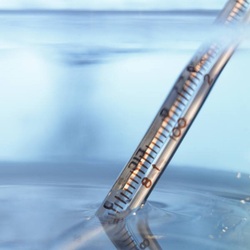
By now our systems have drifted to a lower temperature biomass, but even with this biomass a drop in temperature does lower activity rates of the microbes and their enzymes. A rule-of-thumb is that for every 10 oC drop in temperature we lose 50% of microbial activity. You can combat this efficiency loss by running higher MLVSS (more bacteria) and by adding exogenous cultures (bioaugmentation) to supplement your active population of microbes.

 RSS Feed
RSS Feed